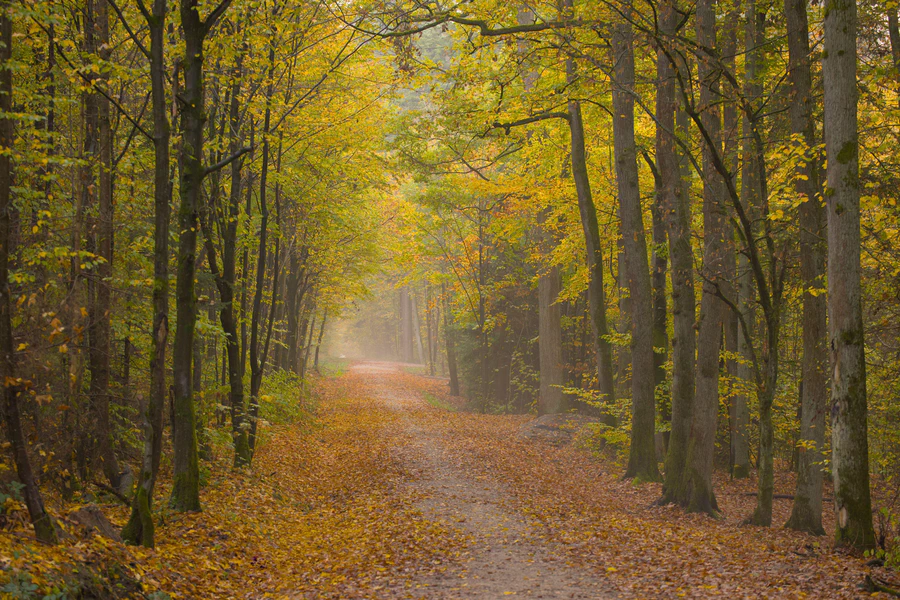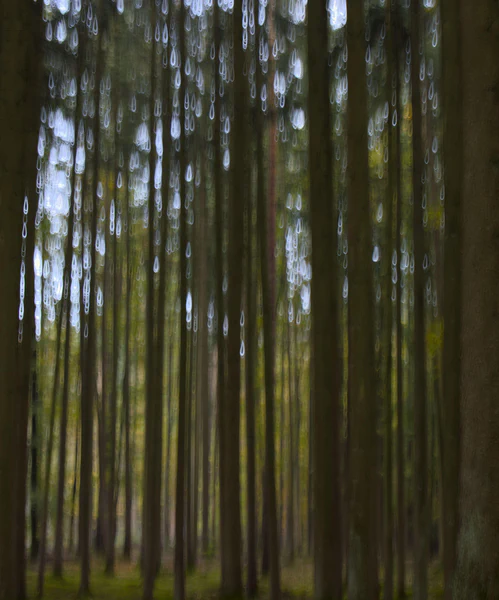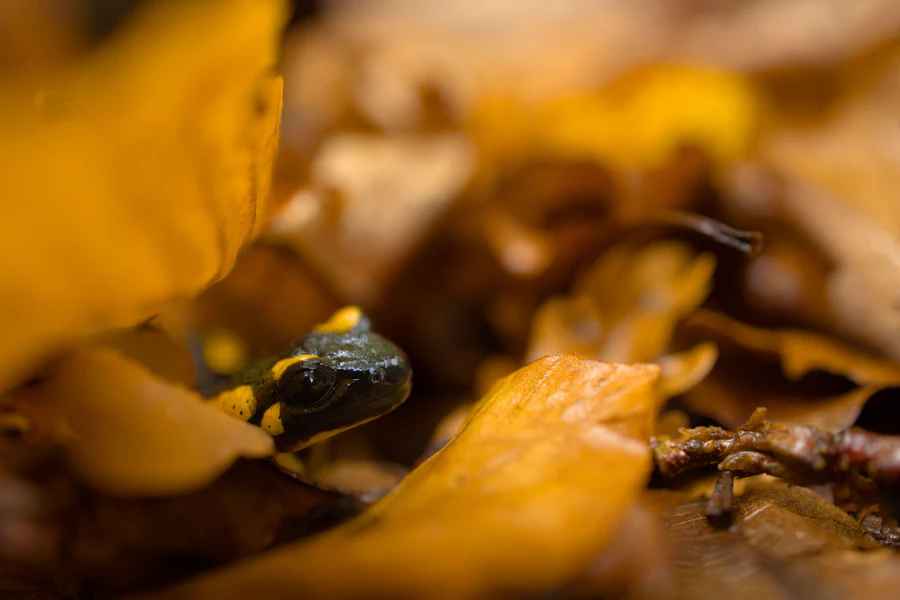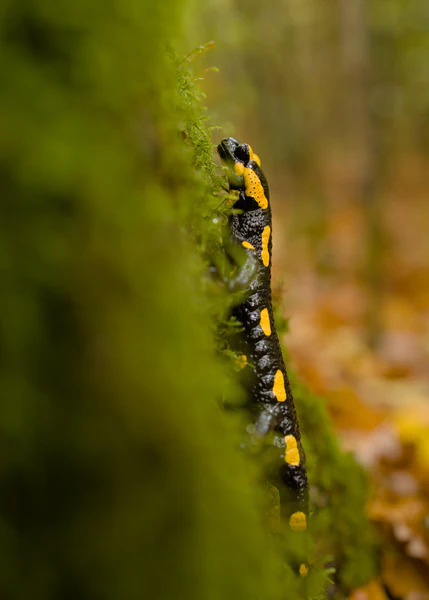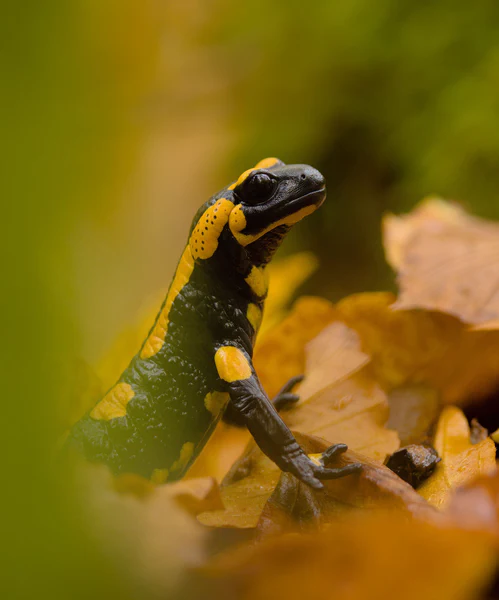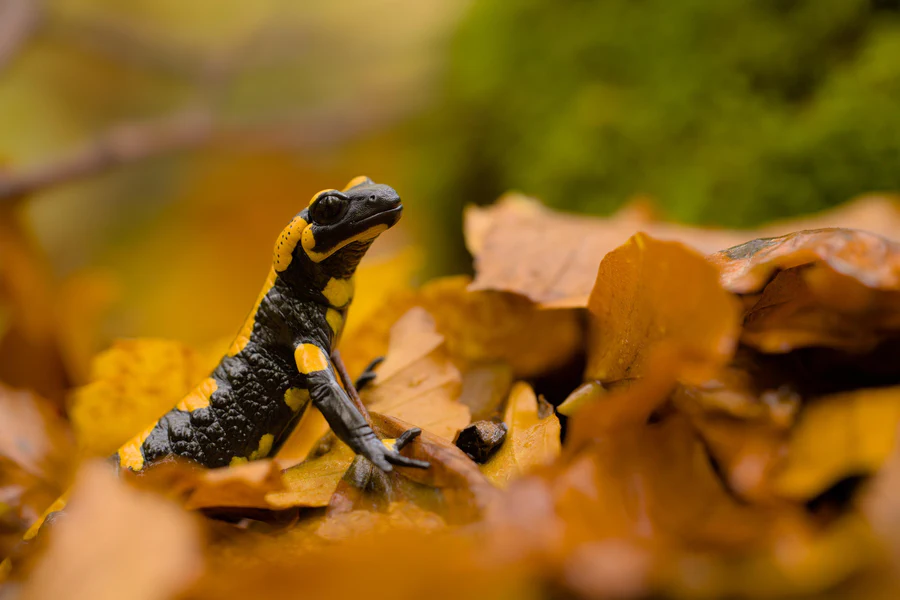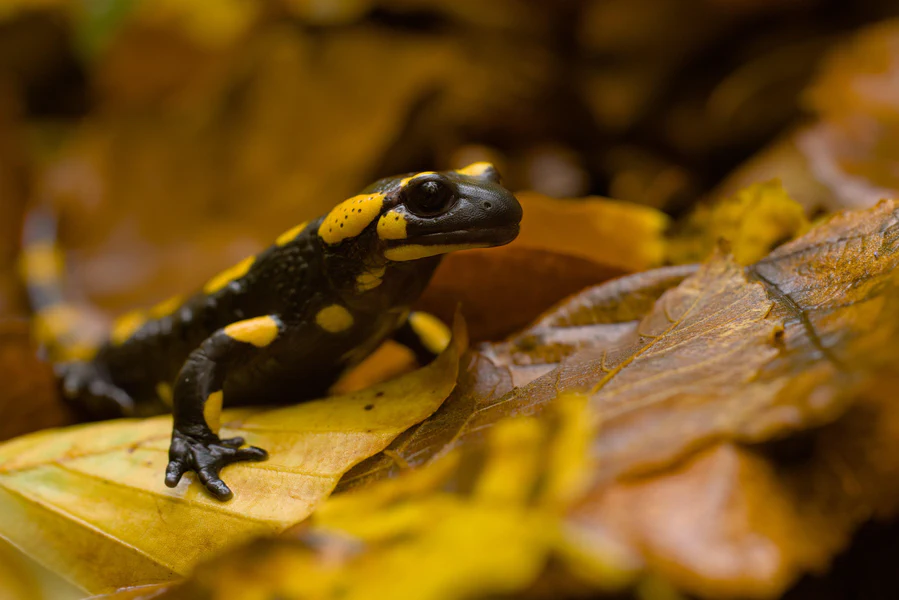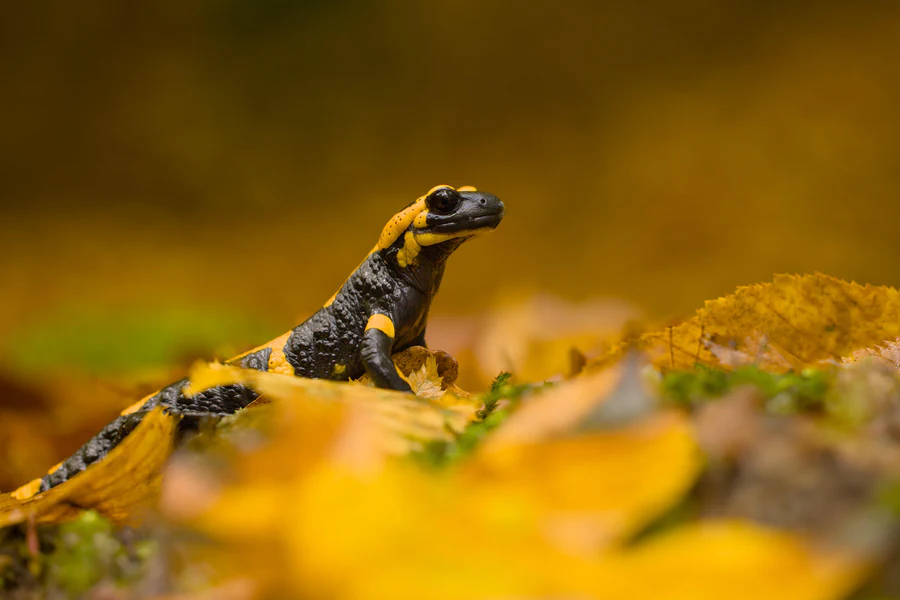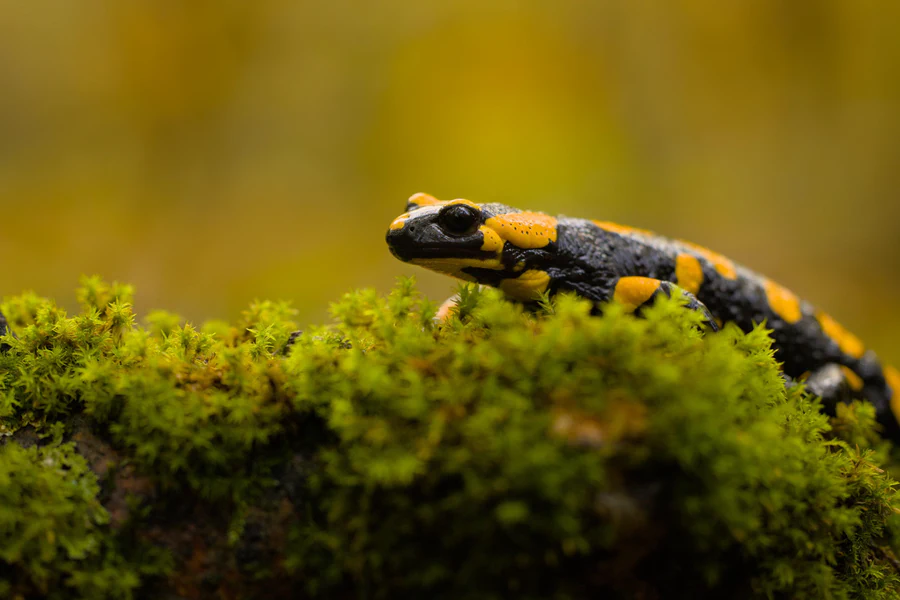On our annual company hike in the autumn of this year we spotted three fire salamanders. These cool creatures are known for their vibrant yellow (sometimes orange) and black coloration, which serves as a warning to predators of their toxic skin. Unfortunately, I didn’t have my camera with me, but it sparked my interest in these cool looking creatures. When I told my mother about this sighting, she told me that she knew an area where I could find even more of them.
So a few days later, my mother and I went to a forest near Forchheim (Franconia). It was a cloudy day and it had rained the day before. Perfect conditions to see fire salamanders, as these mostly nocturnal amphibians only come out at daylight when there is enough moisture. So curious and full of hope we started our little hike. The trail went uphill, most of the time along a small creek. That’s no coincidence, for fire salamanders it is essential to have a body of water in their habitat: They spend their infancy in water. Females develop the eggs internally and deposit the larvae into the water just as they hatch.
After about 5 minutes my mother told me that we were now in the area where the fire salamanders live. Only a hundred meters later, we spotted the first fire salamander. It was perched on an old and mossy broken branch. Unfortunately, it didn’t stay there for long, instead it walked its way through the yellow and orange fall leaves. While I was trying to photograph it, my mother spotted the next one just a few meters away. After a few minutes, both salamanders had moved and were now hiding under some large roots. I didn’t want to bother them, so we moved on.
Fire salamanders have an incredibly long lifespan for amphibians, with some individuals living up to 20 years in the wild. During their mature life they feed primarily on snails, small insects, spiders and worms.
It wasn’t long before we spotted a third one. From then on, we spotted fire salamander every few meters. It was great! The luck was definitely on our side that day. We immediately noticed that each salamander looked a little different, and indeed, the variance in the coloration is used by scientists to distinguish individuals during studies.
The light began to fade when the best scene appeared. A salamander was walking through the leaves, heading for a very mossy larger branch sticking out of the ground. I positioned myself to be prepared. I was lucky: the salamander climbed the broken branch and rested at the right spot for me to take photos. After a minute or so it continued on its way.
In total, we encountered 22 individuals that day! What an amazing experience.
A few days later we visited the exact same area again, but this time we din’t see a single fire salamander. Why? Because there was not enough moisture in the air and in the leaves on the ground.
List of references:
